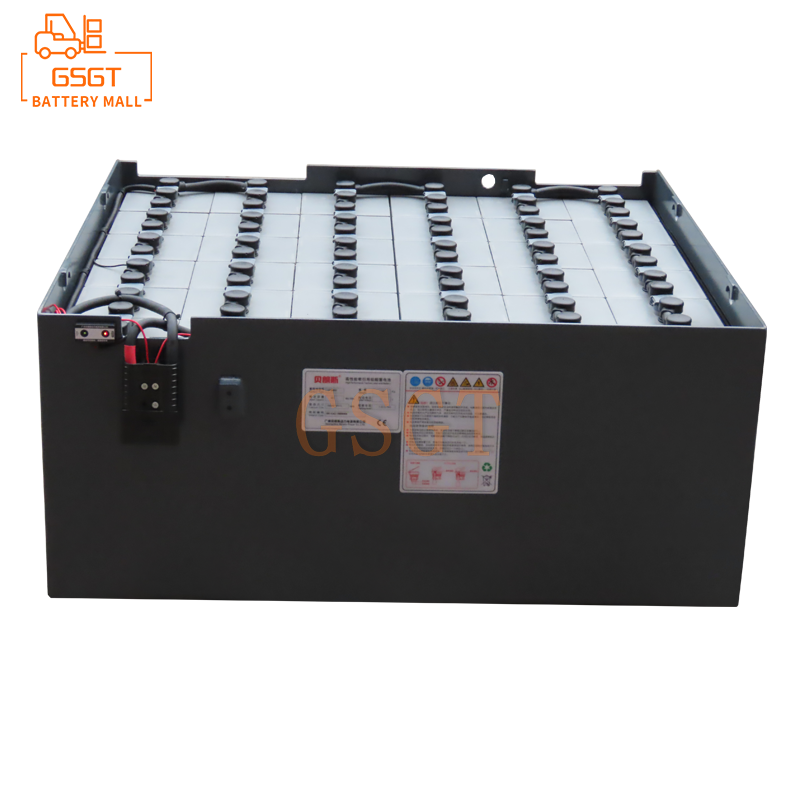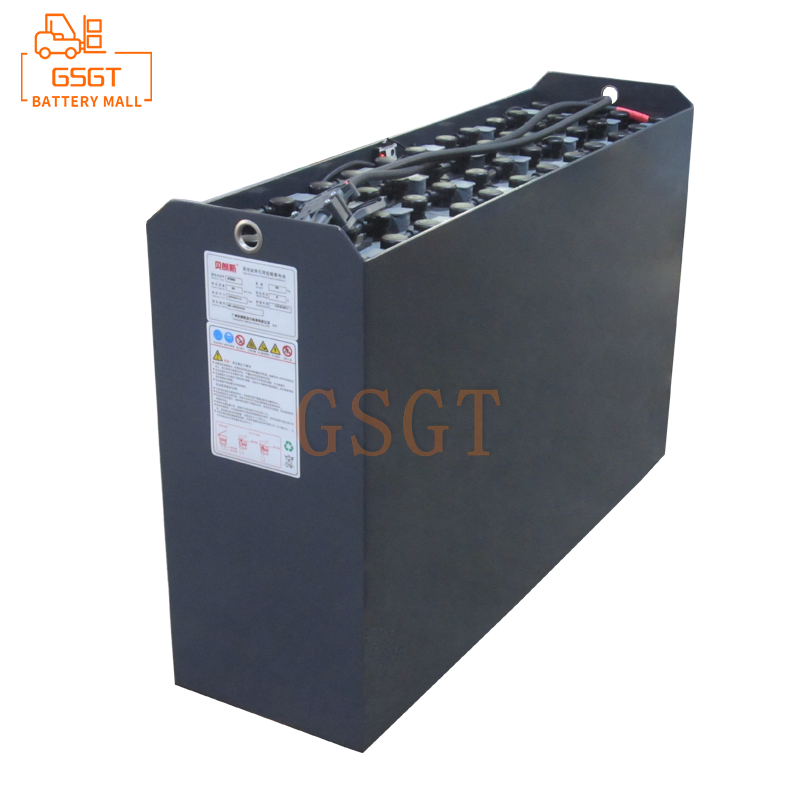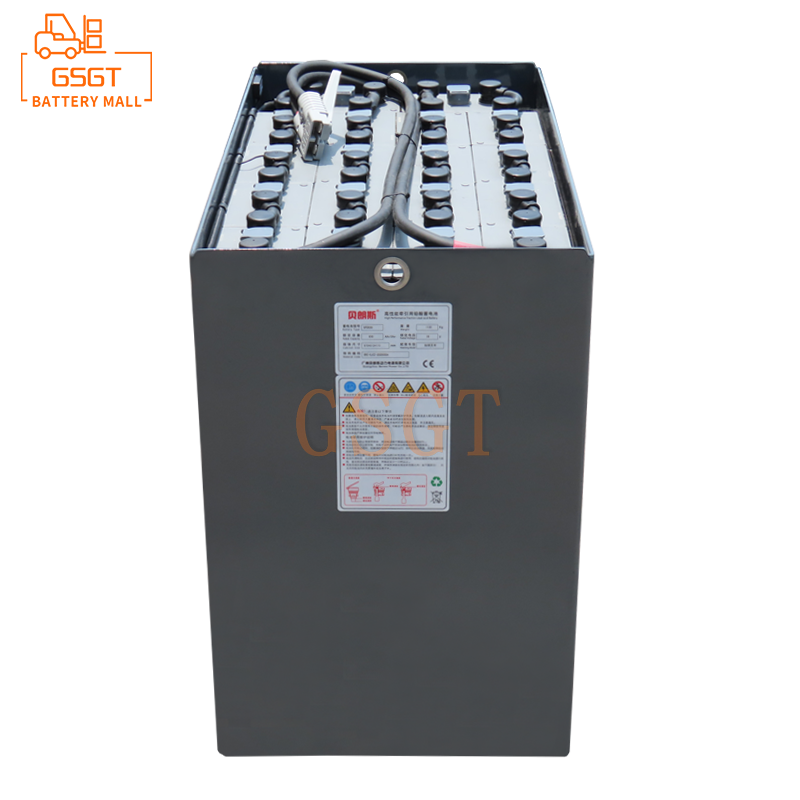Time:2025-05-29 08:25:02
Browse:593
In the modern logistics and warehousing industry, forklifts, as indispensable handling equipment, the performance and service life of their power core - lead-acid batteries - directly affect the operational efficiency and cost expenditure of enterprises. Extending the cycle life of lead-acid batteries in forklifts not only reduces equipment maintenance costs and minimizes downtime caused by battery replacement, but also helps enterprises achieve green and low-carbon operations. This article will deeply explore effective strategies for extending the cycle life of lead-acid batteries in forklifts from multiple dimensions such as scientific charging, rational use, and daily maintenance.
1. Scientific Charging: Laying the foundation for long battery life
(1) Control of charging timing
The charging timing of lead-acid batteries has a crucial impact on their lifespan. Excessive discharge can lead to sulfation of the battery plates, significantly shortening the battery's lifespan. Frequent shallow charging, on the other hand, may cause a "memory effect" in the battery, reducing its capacity. It is generally recommended to charge the battery when the remaining power is around 20% to 30% to prevent the battery voltage from dropping below the critical value. Enterprises can monitor the battery power in real time through the battery display system on the forklift dashboard or external battery monitoring devices, and formulate reasonable charging plans.
(2) Adapt to charging devices and parameter Settings
It is crucial to choose a charger that matches the specifications of the forklift's lead-acid battery. Batteries of different models and capacities have different requirements for charging voltage and current. For instance, for common 24V and 48V forklift batteries, the charging voltage is usually maintained at 2.35-2.4V per cell (12 cells for 24V batteries and 24 cells for 48V batteries), while the charging current is determined based on the battery capacity and generally does not exceed 0.1C (C represents the battery capacity, with the unit being Ah). Meanwhile, modern smart chargers are equipped with a three-stage charging function, namely constant current charging, constant voltage charging and float charging stages. They can automatically adjust the charging parameters according to the battery status, effectively avoiding overcharging and undercharging problems and extending the battery life.
(3) Avoid overcharging and undercharging
Overcharging can cause the battery to heat up, accelerate the evaporation of the electrolyte and the aging of the plates. Undercharging leads to sulfation of the battery plates and reduces the utilization rate of active substances. Enterprises can prevent overcharging by setting an upper limit on charging time and installing automatic charging cut-off devices, etc. In addition, regular equalization charging of the battery (generally once every 2 to 3 weeks) can eliminate the voltage differences among individual cells in the battery pack and ensure the overall stable performance of the battery pack.
2. Rational use: Reduce battery wear and tear
(1) Avoid high current discharg
When forklifts are starting, climbing slopes, or accelerating at full load, the instantaneous current is relatively large. Frequent high-current discharges will accelerate the shedding of active substances on the battery plates and shorten the battery life. Operators should try to avoid sudden acceleration and braking, drive the forklift smoothly and reduce unnecessary large current discharge. For example, when starting a forklift, slowly press the accelerator pedal to make the current rise steadily; Accelerate forward before climbing a slope and use inertia to reduce the current demand during the climb.
(2) Control the working temperature
The optimal operating temperature for lead-acid batteries is around 25℃. Both excessively high and low temperatures can affect the battery's performance and lifespan. When the ambient temperature exceeds 35℃, the chemical reaction rate inside the battery increases, the evaporation of the electrolyte intensifies, and the corrosion of the plates accelerates. When the temperature drops below 0℃, the battery capacity will significantly decrease, the charging acceptance ability will deteriorate, and it may even cause the battery to freeze and get damaged. Enterprises can take measures such as installing battery cooling devices (such as fans, water cooling systems) or adding insulation covers to the batteries to keep the working temperature of the batteries within a reasonable range. In addition, in high-temperature weather, appropriately shorten the continuous working time of the battery and increase the charging frequency. In a low-temperature environment, preheat and charge the battery to enhance its activity.
(3) Plan the workload reasonably
According to the rated capacity and power of the lead-acid battery of the forklift, the working tasks and load weight of the forklift should be reasonably arranged. Avoid long-term overloading operation to prevent excessive battery discharge. Enterprises can formulate forklift usage norms, clearly define the rated load and working hours of different models of forklifts, and optimize the operation arrangement of forklifts through the dispatching system to ensure that batteries operate under safe and reasonable loads. For instance, when it comes to the task of handling heavy goods, forklifts with large-capacity batteries should be given priority, and the operation time should be allocated reasonably to prevent the batteries from being in a high-load state for a long time.
3. Daily Maintenance: Ensure the healthy operation of the battery
(1) Regularly check the electrolyte
During the operation of lead-acid batteries, the electrolyte will decrease due to electrolysis and evaporation, exposing the plates and affecting the battery's performance. Therefore, the electrolyte level should be checked regularly, usually once a week. The level should be maintained 10-15mm above the plates or between the upper and lower limit marks marked on the battery casing. When the electrolyte is insufficient, distilled water or special lead-acid battery replenishment fluid should be added. Do not use tap water to prevent impurities in the water from affecting the battery performance. Meanwhile, regularly test the density of the electrolyte (generally once a month), and adjust the concentration of the electrolyte based on the test results to ensure that the battery is in the best working condition. Under normal circumstances, the density of the electrolyte is approximately 1.28g/cm³ at 25℃. It can be adjusted appropriately in different regions and seasons.
(2) Clean the surface of the battery
Dust on the battery surface and residual electrolyte can lead to an increase in battery self-discharge and a reduction in battery capacity. Regularly (at least once a week) wipe the battery surface with a damp cloth to remove dust, dirt and traces of electrolyte, and keep the battery surface dry and clean. In addition, check whether the battery terminals are oxidized or loose. If there is oxidation, you can sand the surface of the terminals with sandpaper and apply Vaseline or a special battery terminal protector to prevent further oxidation. For loose terminals, tighten them in time to ensure a firm connection, reduce contact resistance and avoid overheating and damage.
(3) Regular deep discharge and activation
Regularly perform deep discharge on forklift lead-acid batteries (generally once every 2 to 3 months), that is, discharge the battery to a relatively low level (but avoid over-discharge), and then fully charge them. This can activate the active material on the plates, reduce sulfation on the plates, and restore the battery capacity. In addition, regular activation treatment of the battery is carried out using battery activation equipment. The sulfation of the plates is repaired through high-frequency pulse current, which improves the charging and discharging performance of the battery and extends its service life. The activation frequency can be determined based on the battery usage, and it is generally carried out once every 3 to 6 months.
4. Storage Management: Extend the lifespan of idle batteries
When the lead-acid battery of a forklift is in an idle state, reasonable storage management is equally important. First of all, store the battery after it is fully charged to avoid long-term storage in a state of low power and prevent sulfation of the plates. Secondly, the storage environment should be kept dry and well-ventilated, with the temperature controlled between 5 and 25 degrees Celsius. Direct sunlight and damp conditions should be avoided. During storage, the battery should be recharged once every 15 to 30 days to prevent self-discharge and resulting in low power. If the battery needs to be stored for a long time (more than 3 months), the battery electrolyte can be extracted, sealed and stored. Before use, the electrolyte should be refilled and the battery should be charged and activated.
5. Personnel Training and System Establishment
Extending the cycle life of lead-acid batteries in forklifts cannot be achieved without the standardized operation and maintenance awareness of the operators. Enterprises should regularly organize training for forklift operators and maintenance personnel to enable them to master the correct usage methods of batteries, key maintenance points and common fault handling skills. At the same time, establish and improve the battery usage and maintenance management system, clarify the responsibilities and operation norms of personnel in each position, and motivate employees to do a good job in battery maintenance through performance assessment and other means. For instance, indicators such as battery service life and maintenance costs should be incorporated into the performance appraisal system, and rewards should be given to employees with outstanding performance. Employees who cause battery damage due to improper operation shall be punished accordingly.
In conclusion, extending the cycle life of lead-acid batteries in forklifts is a systematic project that requires comprehensive measures from multiple aspects such as scientific charging, rational use, daily maintenance, storage management, and personnel training. By taking the above effective measures, not only can the service life of batteries be significantly prolonged and the operating costs of enterprises be reduced, but also the working efficiency of forklifts can be improved, creating greater economic and social benefits for enterprises. Under the general trend of green and low-carbon development, doing a good job in the maintenance and management of lead-acid batteries in forklifts is an important manifestation of enterprises practicing the concept of sustainable development.

$4045

$5710

$2530

$3060

MESSAGE
Professional And Efficient
Security
Affordable Price
Professional Services